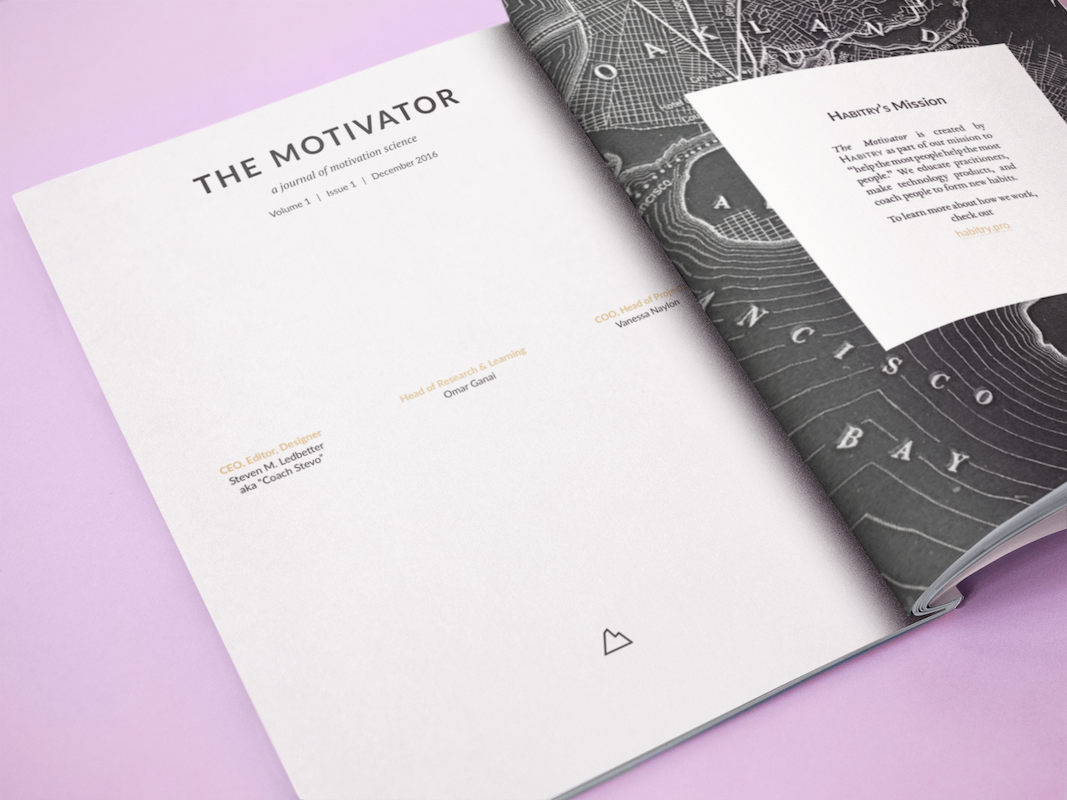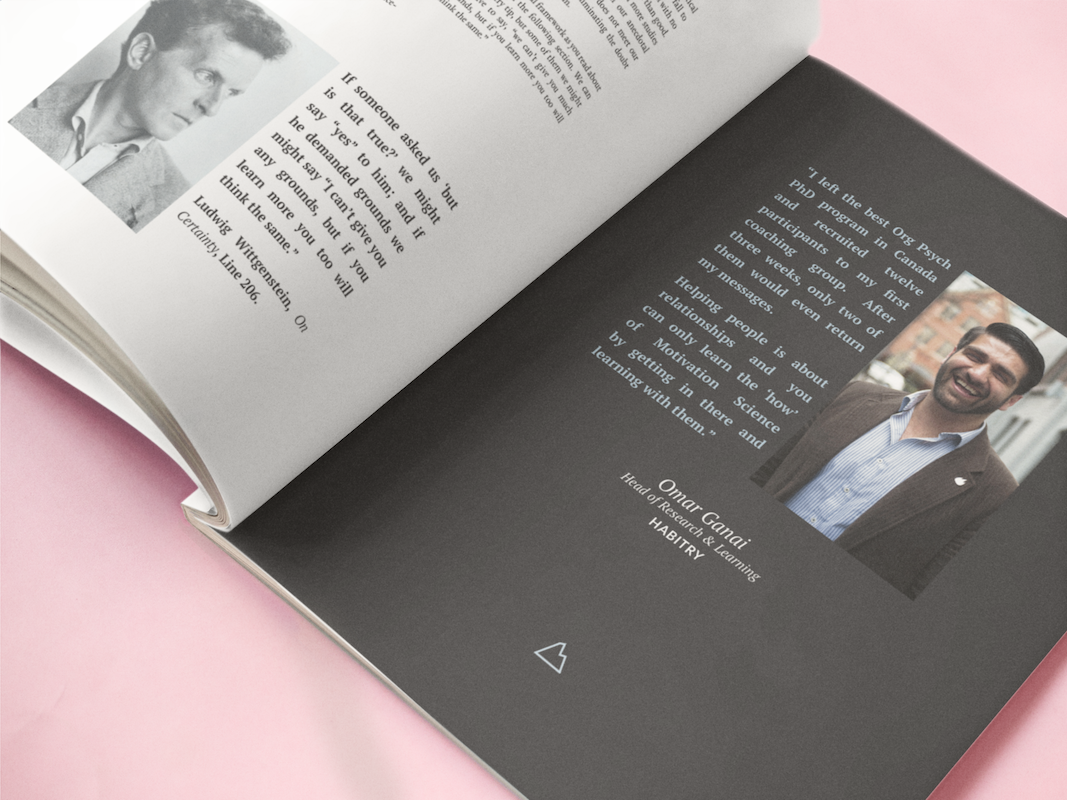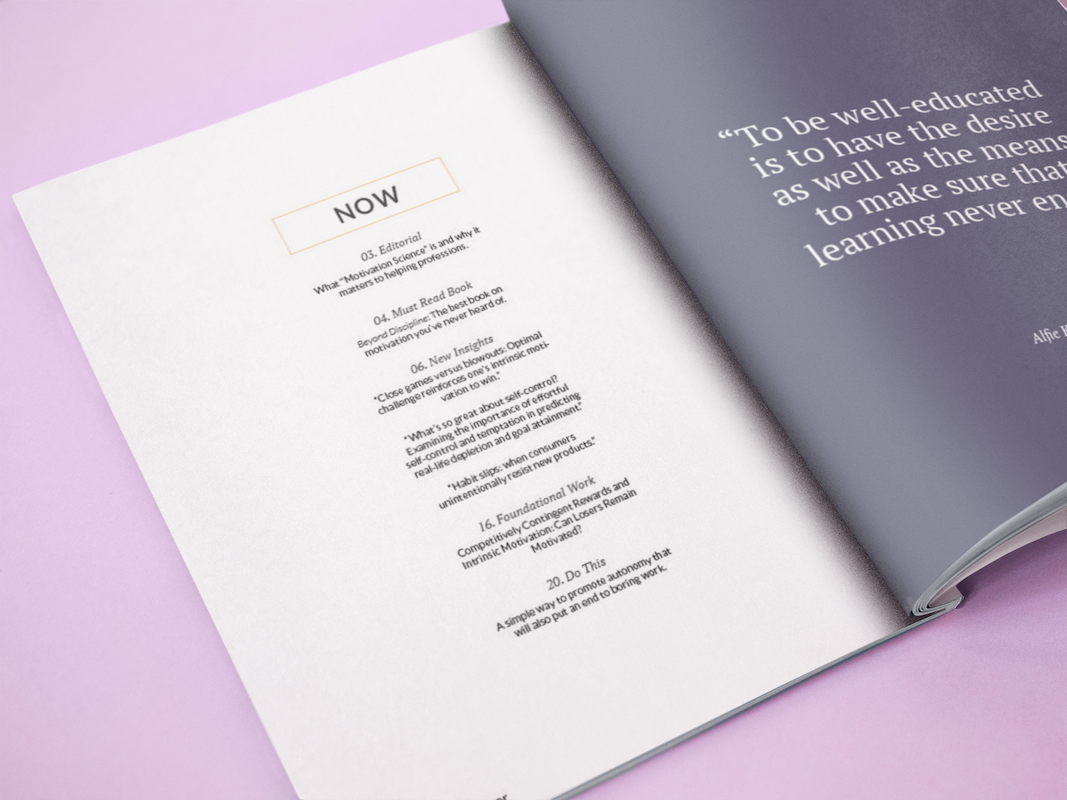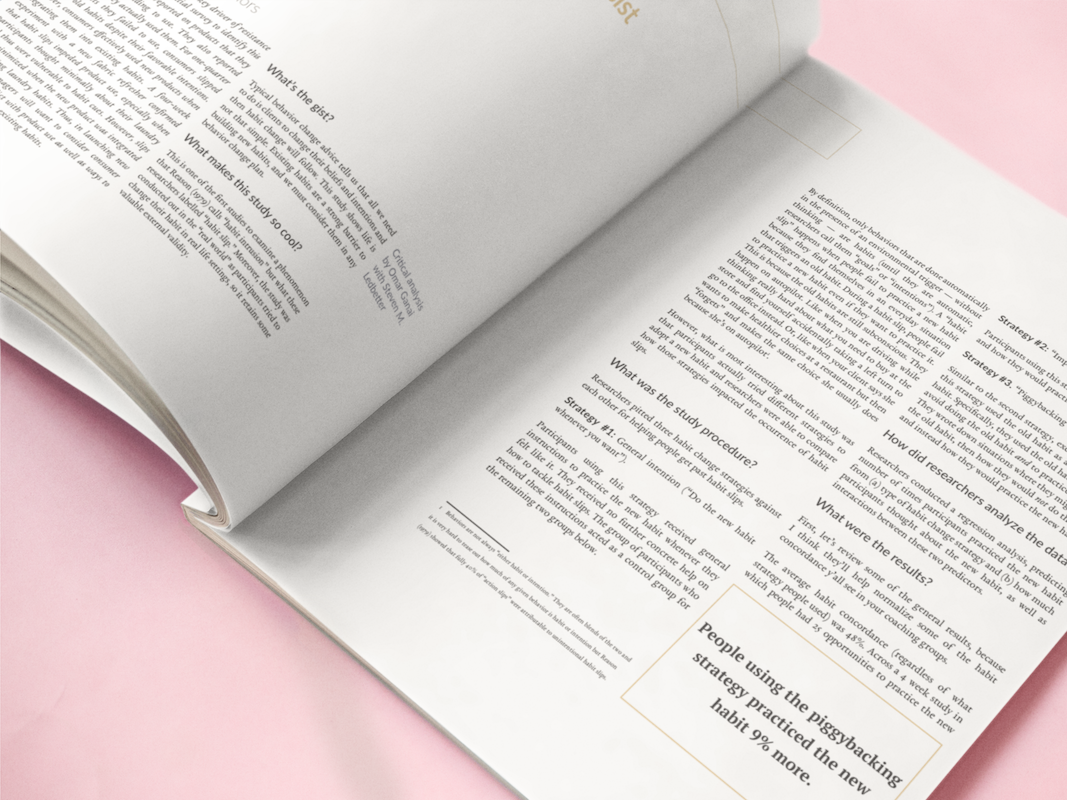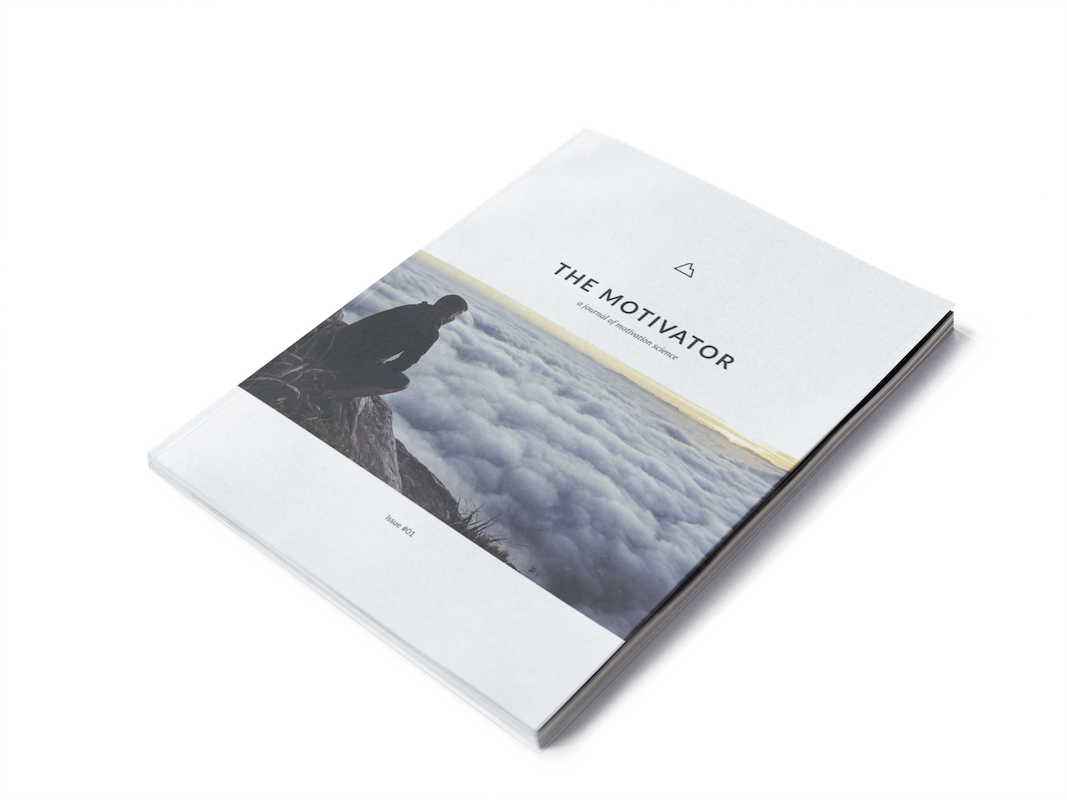

In 2014, Stevo co-founded Habitry to make products for health coaches.
Once Habitry was running with Habitry iOS and Habitry Professionals, coaches began asking for a reasearch review to learn about the latest in Motivation Science. It was the most common request that we had received since starting the Motivate Summits, so we thought it was worth testing demand with a single issue.
The Approach
This project was more straight forward than other Habitry projects: research what else was out in the market, then make something 10x better on a ridiculously short time span.
This time we used an Agile UX approach. We gave ourselves 1 month, divided into two sprints, to research, design, write, produce, and sell the initial issue to see if there was enough demand to make more.
Sprint #1
Research & Vision
Research
At this point, Habitry had developed a Facebook community of over 600 health coaches. So we started just by asking them about other research reviews they were reading. We also asked them for their favorite topics that we had discussed in the Facebook group over the previous year.
Once we had our list of what else was out there, we purchased copies of the reviews they had mentioned and disected what we thought we needed for an MVP.
We then took those ideas back to our community to see if we were in the ballpark on what they wanted.

Vision
Beautiful, or Get F**ked.
Using notes from this process, we developed a list of must-have features we knew we needed to include, but something else jumped out at us when we looked at all the material that health coaches had been consuming: they were all hideous.
It became clear to the team that we only wanted to make this thing if it was beautiful.
This meant an MVP couldn't be a word document or a two-column PDF all in Times New Roman. We wanted to differentiate ourselves by make something that took our customers' breath away. It needed to be a Minimal Beautiful Product
.
For Stevo, this presented a larger challenge. He had done the graphic design for dozens of Habitry web, mobile, and small print projects, but he had never designed a magazine. He didn't even know what software one could use to do such a thing. But that had never stopped him before.
And besides, they had a whole 17 days left to do it.

Sprint #2
Build It & Ship It
Making a Magazine in 17 days
We knew we wanted to make something beautiful, but we had also learned what other features our MBP
would need to have.
Requirements
We knew our product would have to:
- Be beautiful (duh)
- Be available in PDF and print
- Contain an editorial
- Contain reviews of current research with quotes from the researchers explaining the application
- Contain as many
practical tips
as possible - Cost no more than $0.40 per page
Building
The first thing Stevo did was go to a magazine store to find inspiration. Actually, the first thing he did was Google, Magazine Store
because he didn't even know where to go.
He gave himself 1 hour to shop and only brought enough cash to purchase 2 magazines. He ended up buying The Outpost, a Lebanese magazine of possibilities in the Arab world
and the Singapore edition of Counter Terrorism.
With these (very different) magazines in hand, Stevo went back to the office and purchased Adobe InDesign. While that was downloading, he made a list of all the things he liked about the magazines and created a list of rules
for himself:
- Only use two free fonts.
- Only use five colors.
- Only use a six column grid.
- Only use Royalty Free images.
Then he started learning how to use InDesign.
Cute Story Alert
When he was desiging The Motivator, Stevo was working out of a co-working space. One of the companies that was there went under, and they just left a professional-grade printer and color-corrected monitors behind. Since no one else seemed interested, Stevo borrowed
them for 17 days, then put them back in the corner they had been renting after the magazine was done.
The Killer Feature:
Interviews
Since finishing graduate school, Stevo and Omar have been attending conventions and sharing the stage with lots of awesome Behavioral Psychology researchers. They put those connections to use when they were gathering studies for The Motivator and emailed the researchers for exclusive blurbs and comments on how they believed the research could be applied in a health-coaching context.
The Product
The Reaction
After all that, less than 20 people purchased The Motivator.
It was pretty heart-breaking, but all was not lost.
In 2016, Habitry sold Habitry Professionals and The Motivator to Lift the Bar in the UK. We now publish an issue a quarter in Lift the Bar Magazine and consolidate that into an Annual edition. Now thousands of health coaches read The Motivator that wouldn't have been exposed to it otherwise, and we get to make it as pretty as we want.

